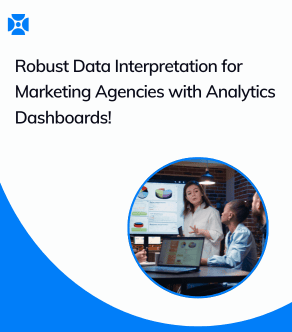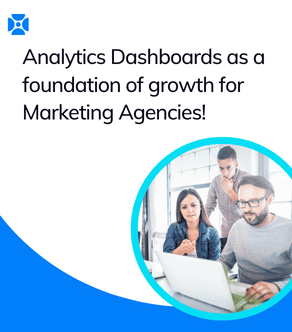
The Role of Strategic Roadmapping in Successful Digital Adaptation
Amidst the complexities and rapid pace of digital change, a well-defined solutions roadmap is crucial for guiding successful digital adaptation. A strategic roadmap provides a clear vision and a structured plan for navigating the digital landscape, outlining the key initiatives, timelines, and resources required to achieve desired business outcomes. Without a roadmap, digital adaptation efforts can become fragmented, inefficient, and misaligned with overall business goals, leading to wasted resources and missed opportunities. As emphasized by strategic management principles and echoed in publications like the Harvard Business Review, a robust roadmap ensures that digital initiatives are prioritized effectively, stakeholders are aligned, and progress can be tracked and measured, ultimately increasing the likelihood of a successful and impactful digital transformation journey.
The Criticality of Effective Implementation Processes
While a strategic roadmap provides the direction for digital adaptation, the effectiveness of the implementation processes determines the actual realization of its benefits. Even the most well-conceived roadmap can falter if the implementation is poorly executed. Effective implementation involves careful planning, meticulous execution, robust testing, comprehensive training, and ongoing support. It requires a structured approach to deploying new technologies, integrating them with existing systems, and ensuring user adoption. As highlighted in project management best practices and industry case studies, a focus on clear communication, stakeholder engagement, and agile methodologies during implementation is essential for minimizing disruptions, mitigating risks, and maximizing the positive impact of digital adaptation initiatives.
Zoho Solutions as a Catalyst for Digital Transformation
Zoho Solutions offers a comprehensive and integrated suite of business applications that serve as a powerful catalyst for digital transformation across various organizational functions. From customer relationship management (CRM) and enterprise resource planning (ERP) to marketing automation, business intelligence, and custom application development, Zoho provides a unified platform that enables businesses to digitize their operations, enhance customer engagement, and drive data-driven decision-making. Zoho's modularity and scalability make it suitable for businesses of all sizes and across diverse industries, providing a flexible foundation for their digital adaptation journeys. The interconnected nature of Zoho's applications facilitates seamless data flow and process automation, which are critical for achieving the efficiency and agility required in the digital age.
Solutions road-mapping and adaption fit
Solutions road-mapping, in the context of digital adaptation, refers to the strategic process of defining, prioritizing, and sequencing the technology initiatives and changes required to achieve an organization's digital transformation goals. It serves as a visual and strategic plan that outlines the evolution of technology solutions over time, aligning them with business objectives and providing a clear path for implementation. A well-defined solutions roadmap acts as a communication tool, ensuring that all stakeholders understand the vision, the planned initiatives, and the expected timelines. It also provides a framework for making informed decisions about technology investments and resource allocation, ensuring that digital adaptation efforts are focused and impactful.
Defining Clear Business Objectives and KPIs
The foundation of any successful digital adaptation roadmap is a clear understanding of the overarching business objectives and the key performance indicators (KPIs) that will be used to measure success. These objectives should be specific, measurable, achievable, relevant, and time-bound (SMART), providing a clear target for the digital transformation efforts. For example, a business objective might be to increase online sales by 20% within the next fiscal year, with KPIs such as website conversion rates and average order value being used to track progress. Defining these objectives upfront ensures that all digital initiatives are aligned with strategic priorities and contribute to tangible business outcomes.
Assessing Current Digital Maturity and Identifying Gaps
Before embarking on digital adaptation, it is crucial to assess the organization's current digital maturity level. This involves evaluating existing technology infrastructure, digital skills and capabilities, data management practices, and customer engagement strategies. Identifying the gaps between the current state and the desired future state helps to pinpoint the areas where digital transformation efforts need to be focused. This assessment provides a baseline for measuring progress and helps in prioritizing initiatives that will have the most significant impact on bridging the identified gaps. Various digital maturity models and assessment frameworks can be used for this purpose.
Evaluating and Selecting Appropriate Technology Solutions with Zoho
Based on the identified gaps and business objectives, the next step in solutions road-mapping involves evaluating and selecting the appropriate technology solutions to drive digital adaptation. This is where the Zoho ecosystem plays a significant role. Zoho's comprehensive suite of applications offers solutions for various business functions, providing a unified platform for digital transformation. The selection process should consider factors such as functionality, scalability, integration capabilities, cost-effectiveness, and alignment with the organization's long-term technology strategy. A thorough evaluation ensures that the chosen solutions, such as Zoho CRM for sales and marketing or Zoho One for unified operations, are the best fit for the organization's specific needs.
Prioritizing Initiatives and Defining Timelines
With a range of potential digital initiatives identified, it is essential to prioritize them based on their potential impact, feasibility, and alignment with business objectives. A prioritized list of initiatives, along with realistic timelines for implementation, forms a crucial part of the solutions roadmap. This prioritization helps in allocating resources effectively and ensures that the most critical initiatives are addressed first. Timelines should take into account factors such as the complexity of the initiative, the availability of resources, and potential dependencies between different projects. Visual roadmaps, such as Gantt charts or swim-lane diagrams, can be useful for illustrating the sequence and timelines of different digital adaptation initiatives.
Risk Assessment and Mitigation Strategies
Digital adaptation initiatives inherently involve certain risks, such as technical challenges, data security concerns, user resistance, and project delays. An effective solutions roadmap includes a thorough assessment of potential risks associated with each initiative and outlines mitigation strategies to address these risks proactively. Identifying potential roadblocks early on allows for the development of contingency plans and helps in minimizing disruptions during the implementation process. Regular risk monitoring and reassessment should be an ongoing part of the digital adaptation journey.
The Iterative Nature of Solutions road-mapping and adaptation
Solutions roadmapping for digital adaptation is not a static, one-time exercise but rather an iterative process. As the digital landscape evolves, new technologies emerge, and business needs change, the roadmap should be reviewed and updated regularly to ensure its continued relevance and effectiveness. This iterative approach allows for flexibility and agility in responding to new opportunities and challenges. Regular feedback from stakeholders and performance monitoring should inform the updates to the roadmap, ensuring that the digital adaptation strategy remains aligned with the organization's evolving goals.
Tools and Methodologies for Effective Roadmapping
Various tools and methodologies can be employed for effective solutions roadmapping. These include visual roadmapping software, strategic planning frameworks, and project management methodologies. Utilizing appropriate tools can help in creating clear and communicative roadmaps, facilitating collaboration among stakeholders, and tracking progress effectively. Methodologies such as Agile can be integrated into the roadmapping process to allow for flexibility and iterative development. The choice of tools and methodologies should align with the organization's culture and the complexity of its digital adaptation goals.
Conclusion
In conclusion, navigating the complexities of digital transformation and achieving effective digital adaptation requires a strategic and well-orchestrated approach. The development of a comprehensive solutions roadmap, coupled with the implementation of robust and well-managed processes, provides the essential framework for businesses to successfully evolve in the digital age. Zoho Solutions, with its extensive and integrated suite of business applications, serves as a powerful enabler for this transformation, offering the tools and capabilities necessary to digitize operations, enhance customer engagement, and drive data-driven decision-making across the organization. By embracing a strategic approach to roadmapping and implementation, and by leveraging the comprehensive power of the Zoho ecosystem, businesses can not only adapt to the digital landscape but also unlock new opportunities for growth, efficiency, and competitive advantage, ultimately charting a strategic path towards digital excellence and sustained success in the years to come.









